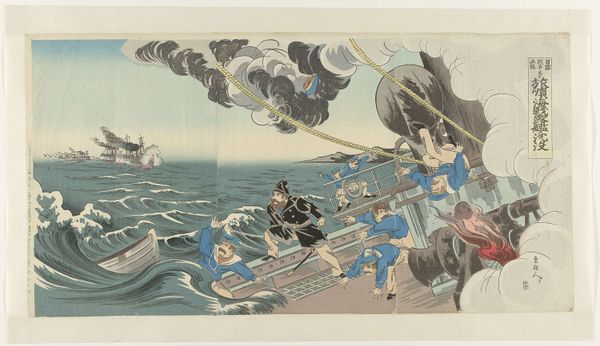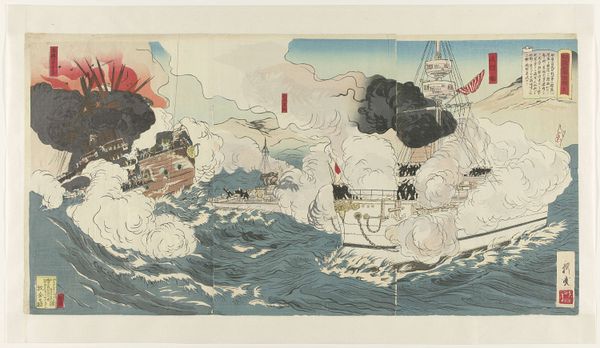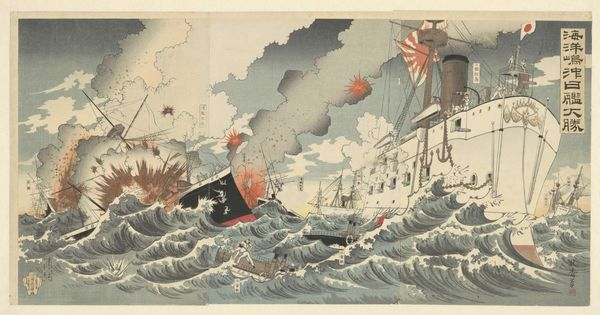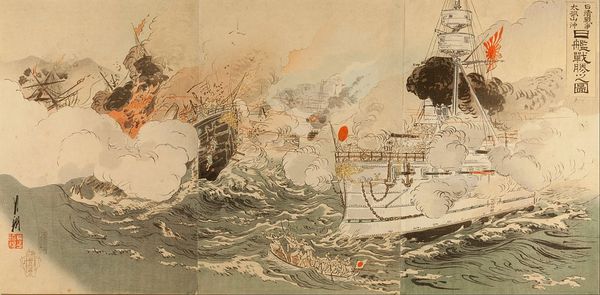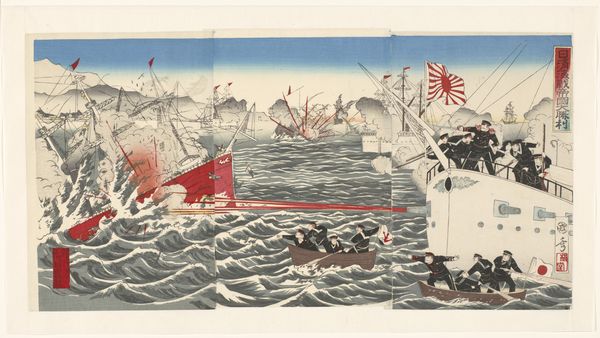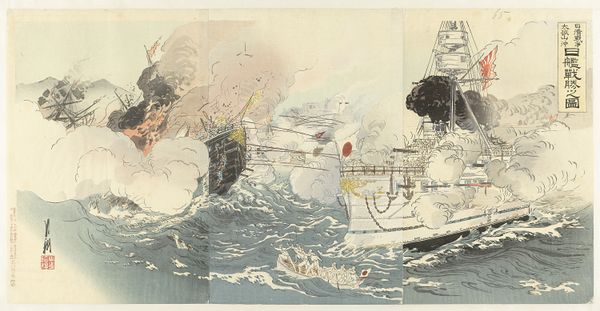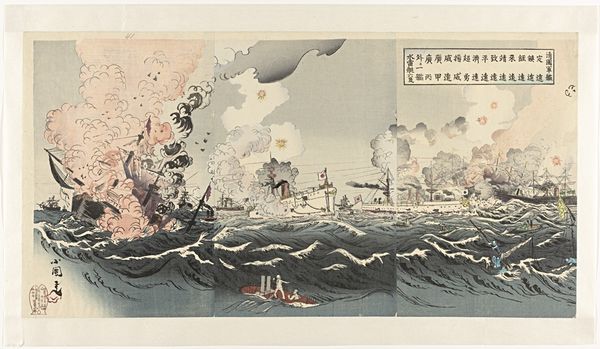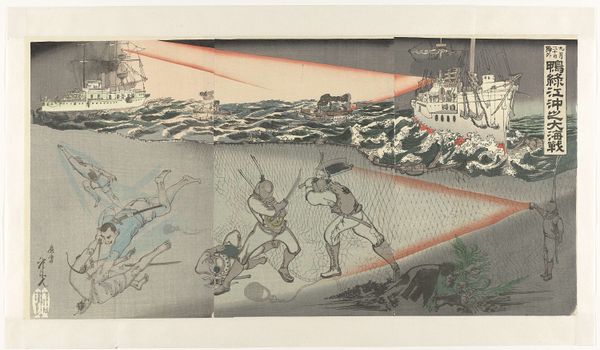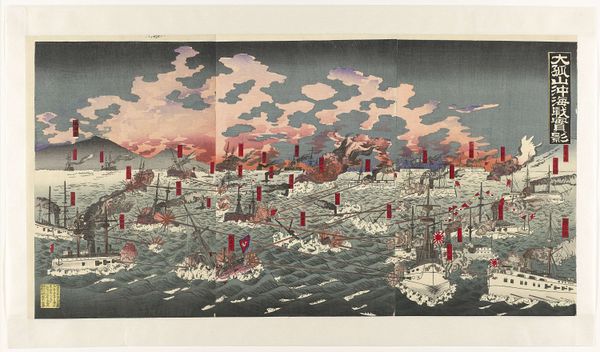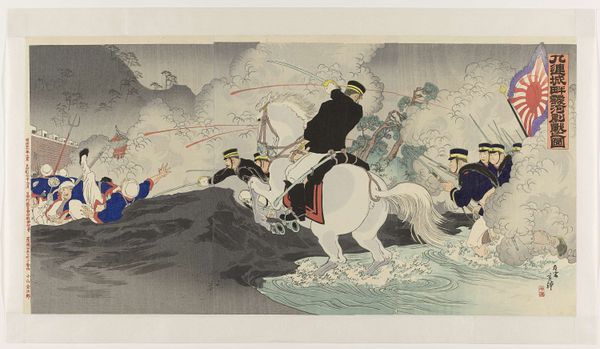
Dimensions: height 374 mm, width 724 mm
Copyright: Rijks Museum: Open Domain
Editor: This dynamic print, "Grootse overwinning van Japan: de zeeslag nabij Haiyang eiland" by Inagaki Kadō, made in 1894, depicts a naval battle with incredible energy using woodblock printing. The billowing smoke and crashing waves give it a really dramatic feel. What catches your eye when you look at the composition? Curator: It is indeed a remarkable arrangement of line and form. Note how the artist segments the plane through stark tonal contrasts, achieved through the printmaking process. The lines are sharply defined, delineating the chaotic dynamism of naval conflict; note, in particular, how each wave is described by strong linearity. The overall formal organisation adheres to asymmetrical arrangement, a choice that amplifies the impression of movement and incident within the composition. The limited colour palette contributes also. Editor: I see what you mean; the limited colours do keep your focus on the shapes. But what does that achieve? It seems unusual given it's meant to be representing something real. Curator: Precision. Consider the implications of colour: would a greater palette enhance, or perhaps dilute the powerful lines? It is the artist’s objective formal economy that endows the conflict with heightened visual drama. The gradations of shading within each woodblock impression lend dimensionality and create an affecting illusion. Editor: I see! The restricted palette forces you to appreciate how the linework defines shapes. So the formal elements create that impact rather than colour. It's like, everything has to work harder to get the same effect! Curator: Precisely. Kadō directs us to experience conflict filtered and understood not just by what is portrayed but crucially how that portrayal is structured and presented via artistic, and material means. It is, formally, rather compelling. Editor: I'd never thought about that relationship, before. Looking closer at the material qualities will probably reveal similar choices again. Thanks!
Comments
No comments
Be the first to comment and join the conversation on the ultimate creative platform.
